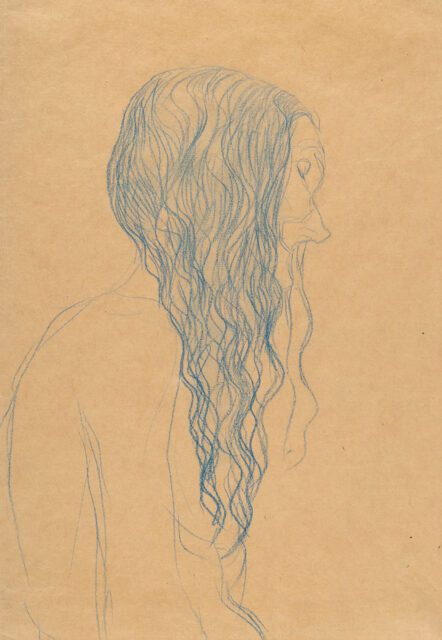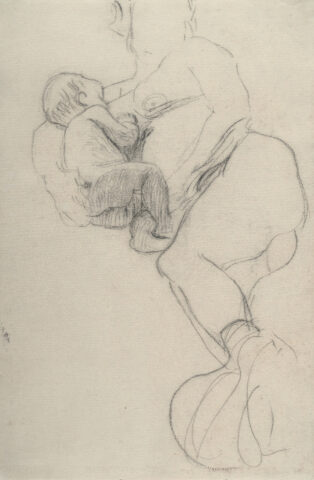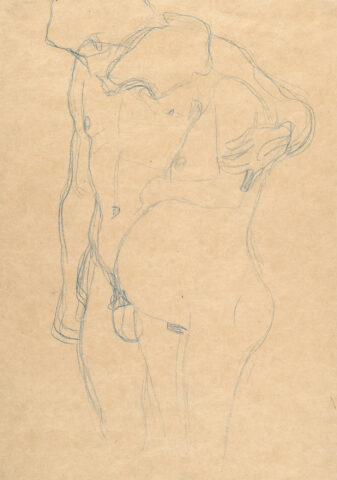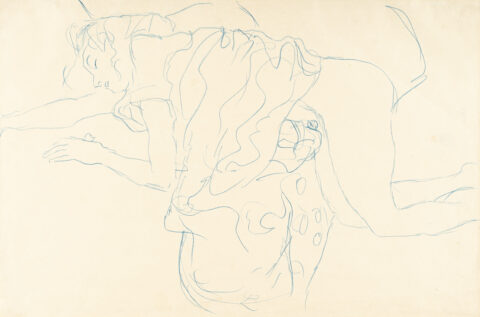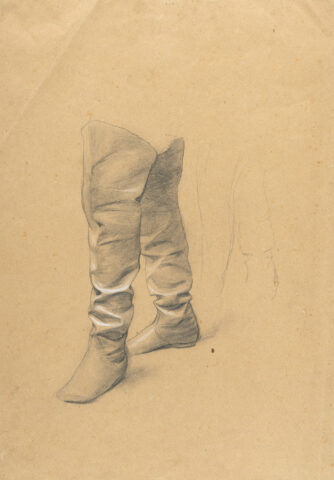
Bust of an old woman facing right
Details
Strobl 674. Literature: Werner, Alfred, Gustav Klimt. One Hundred Drawings, New York 1972, cat. no.30; Sabarsky, Serge, Gustav Klimt Drawings, London/Mt., New York 1984/85, cat. no.36; Verzé, Luigi Maria (ed.), in: KOS. Rivista di scienza e etica, NS, No. 50, November 1989, with col. illus. p. 22. Exhibitions: Watercolors and Drawings, Serge Sabarsky Gallery, New York 1969; Gustav Klimt. 100 disegni, Pinacoteca Capitolina, Rom et. al. 1983–1997, cat. no.36 and 28; Gustav Klimt. Zeichnungen aus amerikanischem private ownership, ausgewählt von Serge Sabarsky und aus Beständen des Historischen Museums der Stadt Vienna, Historisches Museum der Stadt Vienna et. al., 1984/85, cat. no.53; Europalia 87. Österreich. Gustav Klimt, Musées Royaux des Beaux-Arts de Belgique, Brüssel 1987, cat. no.77; Gustav Klimt. 1862-1918, Nassau County Museum of Art, Roslyn 1989; Gustav Klimt, Palazzo Strozzi, Florence 1992; Gustav Klimt, Palac Sztuki, Krakau 1992; Hommage à Serge Sabarsky. Klimt. Kokoschka. Schiele. Aquarelle und Zeichnungen, Jahrhunderthalle Hoechst, Frankfurt/Main 1997, cat. no.11; Kunstforeningen, Copenhagen 2002; Centro Social y Cultural de la Fundación La Caixa, Lleida 2009; Gustav Klimt: 150th Anniversary Celebration, Neue Galerie Museum, New York 2012; Klimt and the Women of Vienna’s Golden Age, 1900-1918, Neue Galerie Museum, New York 2016/17. Provenance: Elliott Scott, Evanston/Illinois; collection of/estate of Serge Sabarsky, New York; collection of/Foundation Vally Sabarsky, New York.
Descrizione
• Study for the painting in the faculty of medicine which Klimt painted as a commission from the University of Vienna (destroyed by fire)
• Unsparing yet peaceful depiction of the aging human body
• Expressive sketch in light blue She smiles gently and quietly, completely absorbed in herself.
Klimt’s ” Portrait of an Old Woman Facing Right”, rendered on paper in delicate blue coloured pencil strokes, radiates a calm and quiet beauty, as if the artist wanted to celebrate the human body despite its undeniable aging. In 1894, Gustav Klimt and his colleague Franz Matsch were commissioned by the University of Vienna to decorate the ceiling of the Great Ceremonial Hall with four paintings. These were to depict allegories of the four faculties – medicine, theology, philosophy and jurisprudence. While Klimt completed an initial compositional sketch in 1898, it would take until 1907 for the painting to reach its final form with the help of hundreds of sketches and various intermediate states, showing the cycle of growth and decay, life and death in its final state. In the foreground, the figure of Hygieia, an allegory of health, holds up the Aesculapian snake and a bowl of Lethe water. Behind her, on the right, numerous people are twisted into a ball. Old and young, tall and short, they symbolise the different ages of life, birth, life and death. They are connected only by two outstretched arms to a female figure on the left of the picture, with an infant at her feet. The two figures concentrate the message of the mass of figures, namely the growth and decay of human existence. Meanwhile, Death, shown in the form of a skeleton, throws out his veil and prepares to envelop the various figures in the picture in it, a detail that made the picture into a scandal: it was far too negative! The artist only emphasises the misery of the human body and life! Where are the medical skills of prevention, the modern healing possibilities? And what is this lascivious naked woman on the left doing? Meanwhile, the tremendous criticism did not lead Klimt to rethink his work. On the contrary, he pursued his style even more vehemently and subsequently created another scandalous painting in the work for the faculty of Jurisprudence. Klimt’s faculty paintings were not installed at the university. Where possible, Klimt bought back the sketches and the final paintings, from whence they ended up in private collections. During the National Socialist era, the faculty paintings were confiscated and finally burnt at Immendorf Castle when the looted art collected there was set on fire by German troops. Only the photographs of the faculty paintings and numerous sketches survive, and the portrait offered here finds its almost exact counterpart in the finished painting in one small detail. It can be found below the figure of Hygieia with bowl, where we see the old woman, smiling mildly and softly.
* Tutte le informazioni includono la commissione a carico dell'acquirente (27%) senza IVA e senza garanzia. Salvo errori.
** Tutte le informazioni più la commissione a carico dell'acquirente e l'IVA e senza garanzia. Salvo errori.
*** Con riserva: L'offerta è stata accettata al di sotto del limite. L'acquisizione dell'opera potrebbe essere ancora possibile nella nostra vendita post-asta.
R = Le opere d'arte regolarmente tassate
N = Opere d'arte soggette a tassazione differenziata e provenienti da un paese non UE
Non è consentita la riproduzione e la distribuzione privata o commerciale di tutte le illustrazioni delle opere esposte nell'archivio della mostra e dell'asta. Tutti i diritti riservati.


